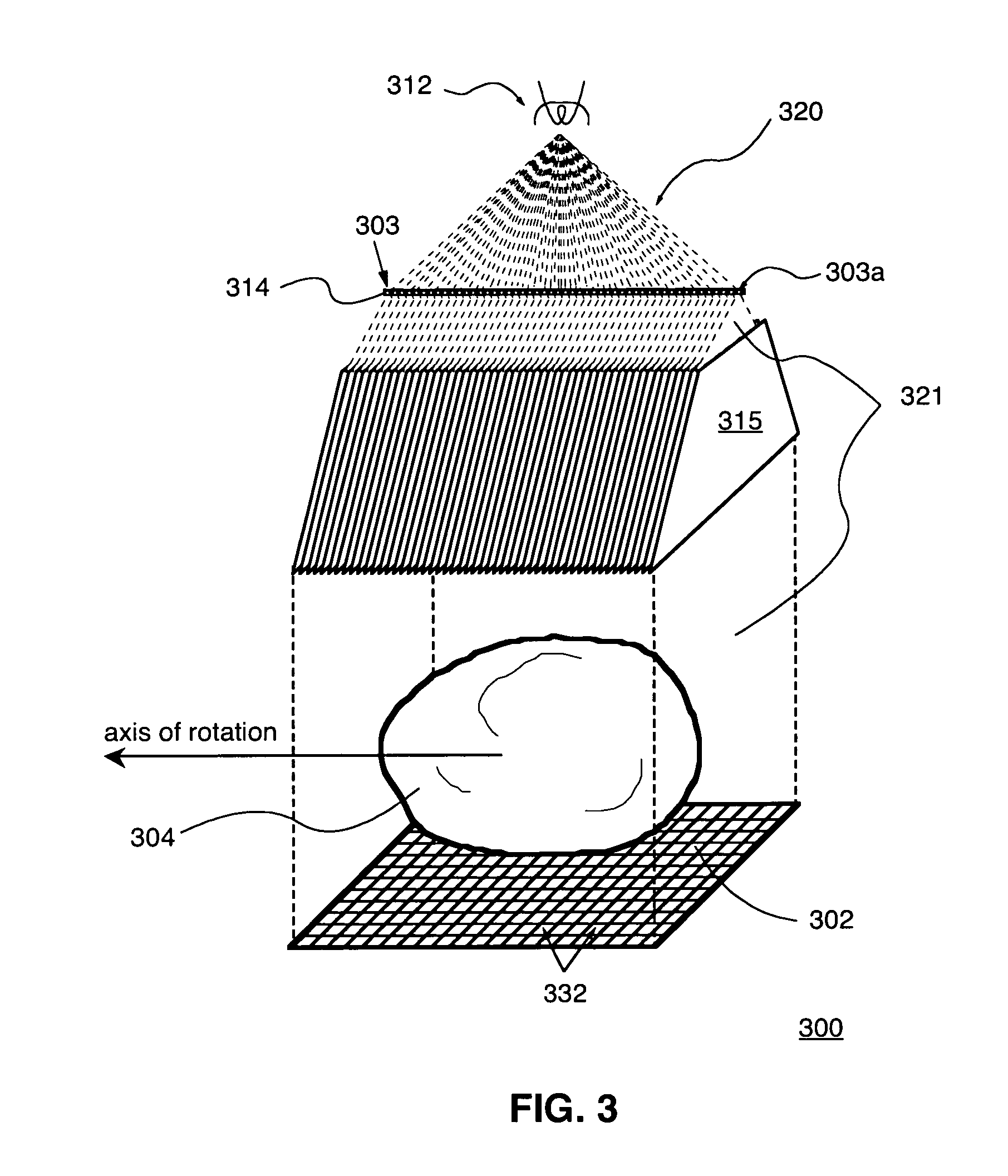Volumetric computed tomography (VCT)
a computed tomography and volumetric technology, applied in the field of ct systems, can solve the problems of obstructing visibility, inability to know, and multi-detector or multi-row ct systems still need more than one revolution during image scanning, and achieve the effect of fast and reliabl
- Summary
- Abstract
- Description
- Claims
- Application Information
AI Technical Summary
Benefits of technology
Problems solved by technology
Method used
Image
Examples
Embodiment Construction
[0021]FIG. 1 illustrates a prior art cone beam CT system 100. System 100 includes an x-ray source 101, which employs an x-ray tube, for providing x-rays 120 emanating from a point 103, hereinafter referred to as the focal spot 103. The detector array 102 can be a wide arc or a flat 2-dimensional array containing dozens or hundreds of rows of x-ray detectors. Detector 102 measures x-rays emanating in all directions from the focal spot 103. The cone beam CT system 100 is characterized by the shape of x rays 120 emanated from the focal spot 103 onto the detector array 102. Both the x-ray source 101 and the detector array 102 may be mounted on a gantry (not shown), and may revolve around an axis of rotation of a circular opening 130. The gantry could be a C-arm. An object 104, typically a patient, is positioned in the circular opening 130 via an examination platform, e.g., a motorized table (not shown) that can move up or down and slide in or out of the circular opening 130, so as to pl...
PUM
 Login to View More
Login to View More Abstract
Description
Claims
Application Information
 Login to View More
Login to View More - R&D
- Intellectual Property
- Life Sciences
- Materials
- Tech Scout
- Unparalleled Data Quality
- Higher Quality Content
- 60% Fewer Hallucinations
Browse by: Latest US Patents, China's latest patents, Technical Efficacy Thesaurus, Application Domain, Technology Topic, Popular Technical Reports.
© 2025 PatSnap. All rights reserved.Legal|Privacy policy|Modern Slavery Act Transparency Statement|Sitemap|About US| Contact US: help@patsnap.com



